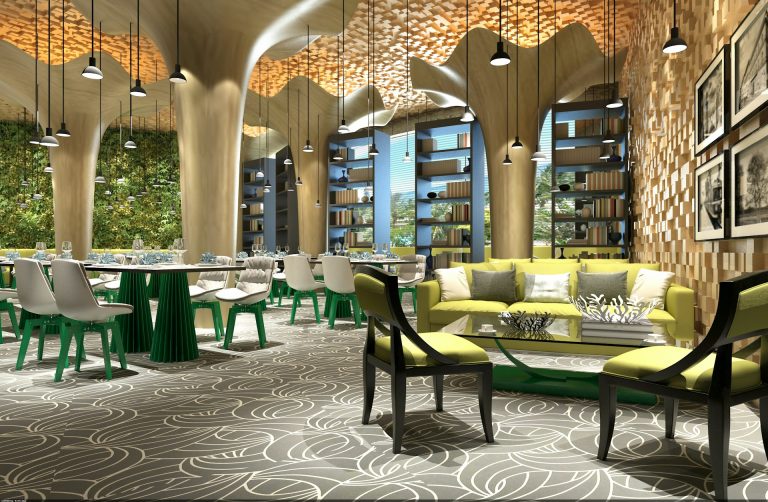Forget granite countertops and sprawling gardens – the real secret ingredient to boosting your property value might just be lurking around the corner, wafting the tantalizing aroma of freshly baked bread or sizzling spices. We’re talking, of course, about restaurants. For savvy homebuyers and astute investors, the proximity to a vibrant culinary scene isn’t just a lifestyle perk; it’s a significant driver of property value, a delicious advantage that keeps on giving.
“Our little corner of Chiswick is buzzing, and being a stone’s throw from so many fantastic eateries definitely adds to the area’s charm – and its property appeal.” – School Kitchen, Chiswick
In a city as dynamic and food-obsessed as London (and indeed, many thriving urban and even suburban areas globally), the allure of having a diverse range of dining options within easy reach is undeniable. Think about it: no more tedious commutes for a decent meal, spontaneous date nights just a short stroll away, and the vibrant energy of a bustling neighbourhood right on your doorstep. This isn’t just about convenience; it taps into a fundamental human desire for connection, community, and, let’s face it, delicious food.
The impact of restaurants on property value is multifaceted, influencing everything from desirability and demand to the overall perception of the neighbourhood. Let’s delve into the key reasons why being near a good selection of eateries can seriously sweeten the deal when it comes to your home’s worth.
The Magnet Effect: Drawing in Buyers and Boosting Demand
A neighbourhood brimming with popular restaurants acts like a magnet, attracting a wider pool of potential buyers. Think about the lifestyle it offers: the ease of grabbing a morning coffee from a trendy café, the joy of a leisurely weekend brunch without needing to book an Uber, the excitement of exploring new cuisines just minutes from your front door. This lifestyle appeal is particularly strong for young professionals, families with busy schedules, and anyone who appreciates the social and cultural vibrancy that a thriving restaurant scene brings.
Increased demand naturally translates to higher property values. When multiple buyers are vying for a property in a desirable location, bidding wars can erupt, pushing prices upwards. The presence of well-regarded restaurants signals a desirable neighbourhood, one that offers more than just bricks and mortar; it offers a lifestyle.
The Perception of Vibrancy and Amenity:
A neighbourhood with a strong restaurant presence is often perceived as more vibrant, lively, and well-serviced. It suggests a community that is active and engaged, with local businesses thriving. This perception of amenity extends beyond just food; it often correlates with other desirable features like independent shops, boutiques, and a general sense of community spirit.
Buyers are increasingly looking for “walkable urbanism,” the ability to access daily needs and leisure activities on foot. Restaurants are a key component of this appeal. They contribute to a lively streetscape, create a buzz of activity, and make a neighbourhood feel safer and more engaging. This positive perception directly impacts how much buyers are willing to pay for a home in the area.
The Economic Ripple Effect:
Restaurants aren’t just places to eat; they are economic engines that contribute to the overall health and prosperity of a neighbourhood. They create jobs, attract visitors, and generate local spending. A thriving restaurant scene can be an indicator of a strong local economy, which in turn makes the area more attractive to residents and investors alike.1
Furthermore, successful restaurants often attract other businesses, further enhancing the neighbourhood’s appeal and driving up property values. A popular bistro might lead to the opening of a trendy bar next door, followed by a boutique clothing store, creating a positive cycle of growth and desirability.
The Convenience Factor: Time is Money (and Happiness)
In today’s fast-paced world, convenience is a highly valued commodity. Being able to easily access a variety of dining options saves time and reduces stress. Whether it’s a quick takeaway after a long day, a casual weeknight dinner, or a celebratory meal, having restaurants nearby simplifies daily life and enhances overall quality of life.
This convenience factor is a significant selling point for potential buyers. It speaks to a lifestyle of ease and accessibility, where everyday errands and leisure activities are within easy reach. This premium on convenience directly translates to a higher perceived value of properties in such locations.
“Being nestled in the heart of Shoreditch means our neighbours are some of the most exciting and innovative food spots in the city. It creates a real buzz and undoubtedly makes the area a more attractive place to live – and invest.” – Nest, Shoreditch
The “Destination” Effect: Drawing Outsiders and Elevating Status
Certain neighbourhoods become known for their exceptional culinary scenes, transforming them into “foodie destinations.” This can significantly elevate the status and desirability of the area, attracting visitors from other parts of the city and even beyond. When a neighbourhood gains a reputation for its restaurants, it becomes a more sought-after place to live, driving up property values for everyone in the vicinity.
Think of areas like Soho or Borough Market in London – their renowned food scenes are intrinsically linked to their high property values. The presence of Michelin-starred restaurants, trendy eateries, and unique culinary experiences creates a cachet that makes the area highly desirable, regardless of the size or features of individual properties.
The Resilience Factor: Neighbourhoods with Strong Food Scenes Tend to Weather Economic Downturns Better
While the property market can be susceptible to economic fluctuations, neighbourhoods with strong fundamentals, including a thriving restaurant scene, tend to be more resilient. Restaurants provide a consistent draw, maintaining foot traffic and local economic activity even during challenging times. This stability can make properties in these areas a more secure investment in the long run.
Furthermore, local restaurants often foster a strong sense of community, which can be a valuable asset during times of uncertainty.2 The social connections and local support networks that develop around these establishments can contribute to the overall resilience and appeal of the neighbourhood.
Beyond the Obvious: The Subtle Influences
The impact of restaurants on property value extends beyond just convenience and demand. There are more subtle influences at play. For example, well-maintained restaurants can contribute to the overall aesthetic appeal of a street, making it feel more attractive and cared for. Conversely, vacant or poorly maintained commercial spaces can detract from the neighbourhood’s charm and potentially lower property values.
Furthermore, the types of restaurants in an area can also influence property values. A neighbourhood with a diverse range of high-quality restaurants may be more attractive to a wider range of buyers than an area dominated by fast-food chains. The culinary landscape reflects the overall character and appeal of the neighbourhood.
The Long-Term Investment:
Investing in a property near a thriving restaurant scene isn’t just about enjoying delicious food; it’s a strategic long-term investment. As cities continue to evolve and the demand for walkable, amenity-rich neighbourhoods grows, the value of properties in such locations is likely to appreciate steadily. The enduring appeal of a vibrant culinary scene ensures a consistent stream of potential buyers and renters, making it a sound financial decision.
Of course, it’s important to consider the nuances. Not all restaurants are created equal, and an excessively noisy or poorly managed establishment could potentially detract from a property’s appeal. However, in general, a diverse and well-regarded restaurant scene is a significant asset that adds tangible value to nearby homes.3
“We’ve seen firsthand how the growth of great restaurants in Southlake has made this an even more desirable place to live. People love having fantastic dining options right around the corner, and it definitely reflects in the property values here.” – Thailicious, Southlake, Texas
Conclusion: A Recipe for Property Value Success
In conclusion, the link between a thriving restaurant scene and increased property values is undeniable. From attracting a wider pool of buyers and enhancing the perception of vibrancy to providing unparalleled convenience and contributing to the local economy, restaurants play a crucial role in shaping the desirability and ultimately the worth of a neighbourhood.4 So, the next time you’re house hunting, don’t just look at the square footage and the number of bedrooms. Take a stroll around the block, soak in the atmosphere, and count the number of enticing eateries nearby. It might just be the most valuable asset your new home has to offer. The proximity to good food isn’t just a lifestyle bonus; it’s a key ingredient in the recipe for long-term property value success.


